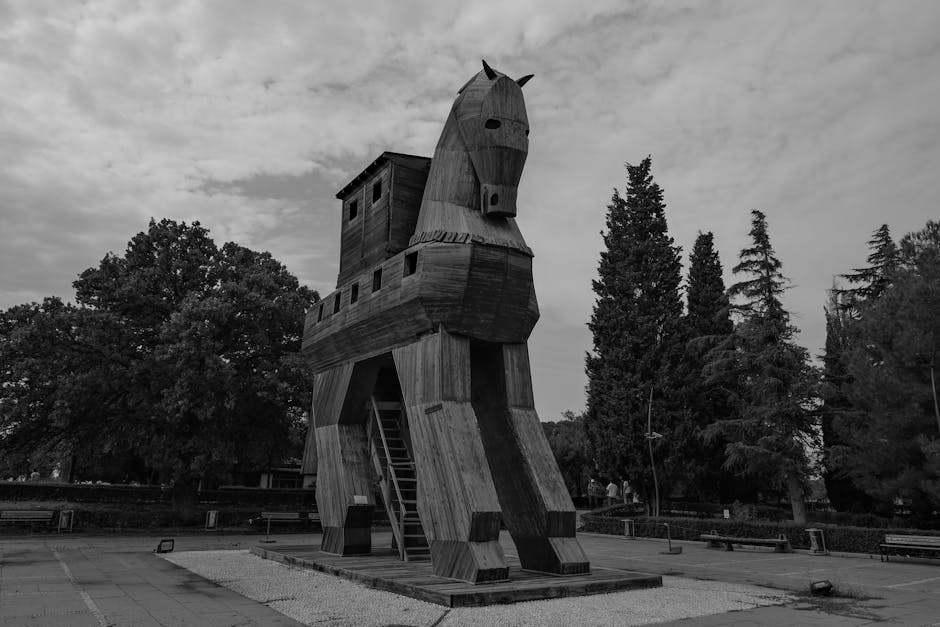The Trojan Horse Myth and What Actually Happened in Troy
The tale of the Trojan Horse is one of the most famous legends from ancient history, immortalized in literature and art for centuries. It tells of how the Greeks, unable to breach the walls of Troy after a decade-long war, devised a cunning strategy: they built a giant wooden horse, hid soldiers inside it, and presented it as a gift to the Trojans. Believing it to be an offering to the gods, the Trojans brought the horse into their city, only for Greek warriors to emerge under cover of night and open the gates for their comrades, leading to Troy’s downfall. Although widely regarded as classical mythology, historians and archaeologists still dispute the actual events that took place in Troy. Was there truly a wooden horse, or was it merely symbolic of another form of military deception? Historical records, archaeological discoveries, and ancient writings provide insight into what may have happened during this legendary conflict.
The Origins of the Trojan War
The story of the Trojan War originates from Homer’s epic poem, The Iliad, written in the 8th century BCE.

According to Greek mythology, the war began when Paris, a Trojan prince, abducted Helen, the wife of Menelaus, king of Sparta. The Greeks, under Agamemnon's command, launched a major military campaign to recover Helen and retaliate against Troy.
While The IliadIt examines particular battles and moments of the war instead of covering its full timeline or outcome, unlike other ancient works such as Virgil’s.Aeneid provide additional details about its outcome. In these accounts, Troy eventually fell due to Greek trickery rather than sheer military might. However, it remains unclear whether these stories reflect actual historical events or are purely literary creations.
Archaeological evidence supports the existence of a city resembling Troy in northwestern Turkey. Heinrich Schliemann's late 19th-century excavations uncovered ruins thought to be the remains of ancient Troy. Further research has uncovered signs of conflict and destruction dating back to around 1200 BCE, potentially aligning with Homer’s timeline. However, whether this destruction resulted from a large-scale war or smaller regional conflicts remains open to interpretation.
The Myth of the Trojan Horse
The idea of a giant wooden horse being used as a deceptive tool is first detailed in Virgil’s Aeneid, written several centuries after Homer’s works. The story describes how Greek warrior Odysseus masterminded a plan to leave behind an enormous wooden horse as an offering to Athena while pretending to retreat. The Trojans, believing they had won the war, brought the structure inside their city walls as a trophy.
That night, Greek soldiers hidden inside emerged and opened Troy’s gates for their returning army. This led to widespread slaughter and the city’s eventual destruction. While this dramatic tale has captivated readers for generations, no concrete evidence confirms that such an event took place.
Many historians speculate that “the Trojan Horse” could symbolize something else, perhaps siege tactics or even an earthquake that weakened Troy's fortifications. Some theories propose that the so-called wooden horse was actually a metaphor for siege weapons, such as battering rams, that the Greeks used to breach Troy's defenses.
Historical Evidence and Archaeological Findings
Excavations at Hisarlik (the site identified as ancient Troy) have revealed multiple layers of settlements spanning thousands of years. Among these layers is evidence suggesting destruction around 1200 BCE, consistent with traditional accounts of the Trojan War.
| Evidence | Findings |
|---|---|
| City Walls | Thick fortifications suggestive of prolonged sieges |
| Bodies & Weapons | Skeletal remains and arrowheads indicate violent conflict |
| Burn Layers | Signs of fire destruction align with accounts of Troy’s fall |
| Ceramic Analysis | Cultural links between Mycenaean Greece and Troy suggest interactions or warfare |
The presence of Mycenaean artifacts at Troy indicates close connections between Greeks and Trojans before any potential conflict. Some scholars propose that rather than one climactic war ending in subterfuge, Troy may have fallen due to prolonged struggles involving multiple factions.
The Legacy and Interpretations of Troy's Fall
The Trojan Horse legend illustrates how myths influence our understanding of history. Over time, artistic interpretations have solidified this image as fact despite uncertainties surrounding its authenticity.
- The term "Trojan Horse" is now synonymous with deceptive strategies across various fields, from warfare to cybersecurity.
- The myth continues influencing literature and film adaptations exploring themes of deception and fate.
- Troy's actual location remains a major archaeological site that draws researchers from around the globe.
- Museums across various countries showcase artifacts connected to Mycenaean Greece and the potential history of Troy.
The fascination with Troy reflects humanity’s interest in deciphering past events through both historical investigation and storytelling traditions passed down through generations.
Summary
The story of the Trojan Horse remains one of history’s greatest legends, whether rooted in reality or purely mythological invention. Archaeological discoveries indicate that a war or significant conflict likely occurred in ancient Troy around 1200 BCE but offer no definitive proof that a wooden horse was involved in its downfall. Instead, historians continue exploring alternative explanations for how Greek forces might have breached Trojan defenses. Regardless of its factual accuracy, this tale serves as a reminder that history often blends with legend over time, leaving us with narratives that shape our understanding of past civilizations.